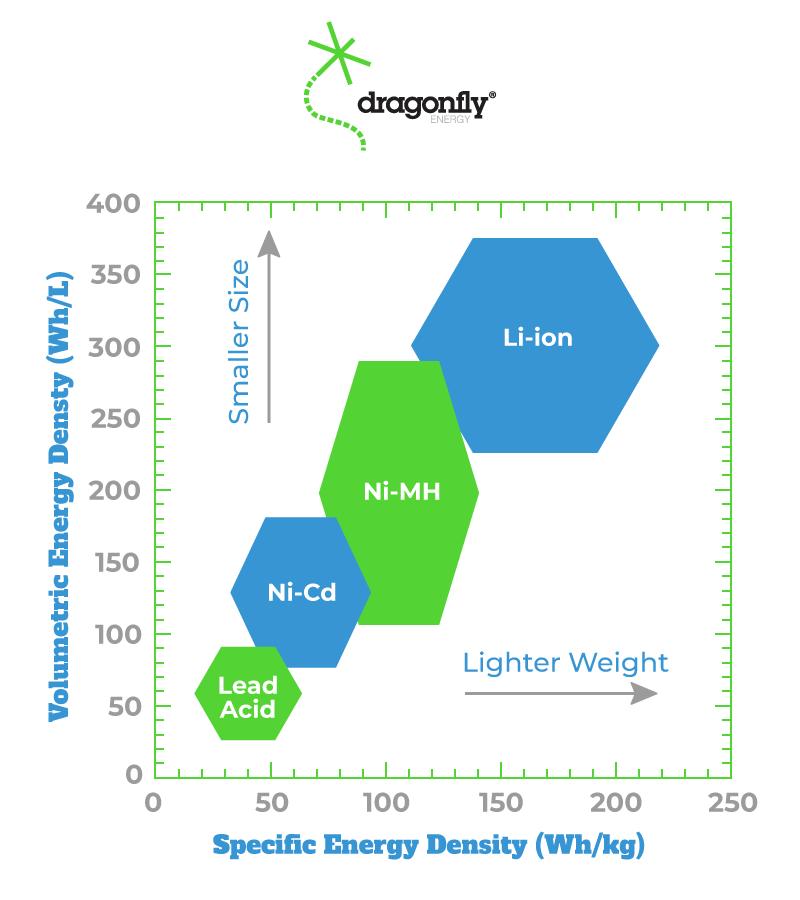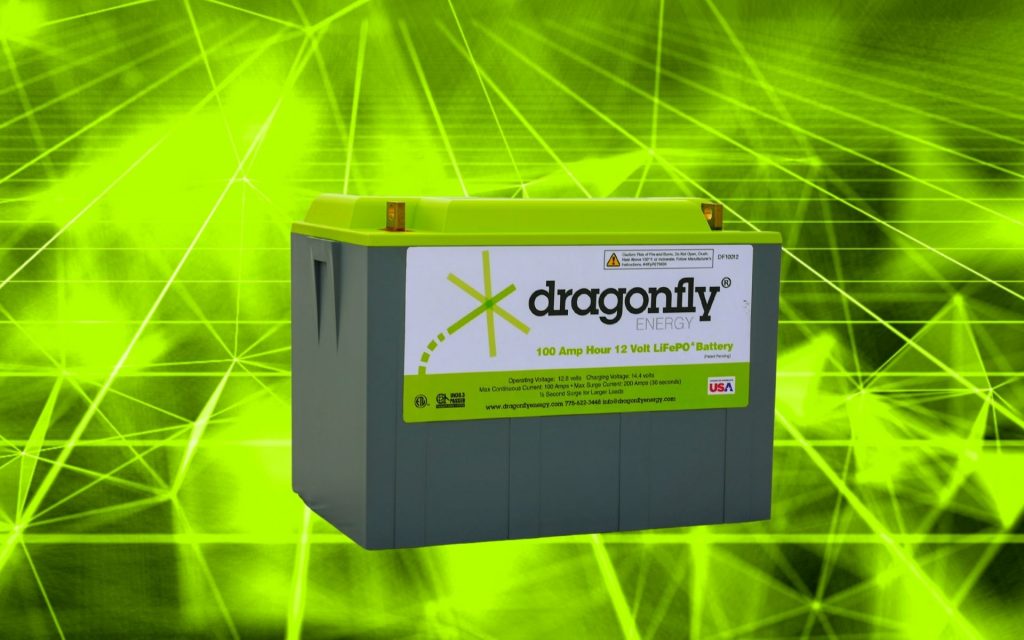
MENUMENU
TALK TO AN EXPERT
Special Hours: 7AM – 6PM PST
TALK TO AN EXPERT
Special Hours: 7AM – 6PM PST

Battery energy density is the amount of energy a battery contains compared to its weight or size. We call this the specific energy density when comparing to weight and volumetric energy density when comparing size.
For example, we measure a battery’s energy in watt-hours (watts per hour, the equivalent of using one watt for one hour). We can then divide a battery’s watt hours (wh) by its kilograms (weight) or volume (liters).
Therefore, the length of time a battery can power a device compared to its weight or size equals the energy density.

Battery energy density is crucial because the higher the energy density, the longer the battery can emit a charge in relation to its size. That being said, high energy density batteries can be useful when there isn’t much room for a battery but you need a lot of energy output. Smartphones and other handheld devices are great examples of this.
Let’s pose the benefits of energy density as a question: Would you rather have a small, lightweight battery that emits power for long periods or a heavy battery that takes up a lot of space and only provides a small amount of energy?
Almost everyone would say the former. This is why high energy density is vital in our world.
It’s easy to confuse energy density and power density because they’re similar in certain ways. They both measure an electrical characteristic of a battery in comparison to its weight.
Nevertheless, energy density and power density differ in one important way: while battery energy density measures the watt hours (wh) per kilogram (kg), power density measures the watt output per kilogram.
This is where power vs. energy comes into play. Power density measures how fast energy can be delivered, while energy density measures how much energy a battery holds.

Batteries with high energy density have transformed the mobile world. With more energy, we can fit useful batteries in smaller spaces. This enables long-lasting phones, laptops, earbuds, or medical devices.
They’re also very lightweight compared to past alternatives. Could you imagine carrying around a 5lb iPhone? Or a 10lb tablet?
More energy density also means we can pack a lot of energy into larger mobile devices like cars, planes, construction equipment, and robots.
When a battery packs more energy in it, it has more energy to release if something goes wrong.
The liquid electrolytes found in lithium-ion batteries are highly volatile and can lead to combustion, presenting a fire hazard. Because of this, there are safety features built into these batteries, limiting how lightweight and compact they can be.
Therefore, the higher the energy density of a battery, the more dangerous it can be, which poses limitations (and risks) to further advancement.
Hands down, lithium-ion batteries take the cake when it comes to high energy density. They’ve transformed our world with advancements in energy consumption and portability. In fact, lithium-ion batteries’ energy density ranges between 260-270 wh/kg, while lead-acid batteries range from 50-100 wh/kg.

There have been many advancements in lithium-ion batteries over the last decade, specifically involving their chemistry. By using different materials for the anode and cathodes, engineers can experiment with electrochemistry and alter the energy density, power density, and more.
The lithium-ion battery with the highest energy density is the lithium cobalt-oxide battery. It uses cobalt oxide as the cathode and graphite carbon as the anode. Because of its high energy density, it’s popular for smartphones, laptops, watches, cars, and any compact device that needs to emit power over long periods.
→ Suggested Reading: Anode vs. Cathode: What’s the Difference?
So if we’re reaching our limits in lithium-ion battery advancements, where do we go from here? The future of battery technology lies in solid-state batteries.
Remember how lithium-ion batteries have a liquid electrolyte solution? The liquid state of this solution is a fundamental problem. It’s unstable, volatile when exposed to oxygen, and can be a considerable safety risk. It also limits advancements in size and energy density because of these safety concerns.
Well, solid-state batteries eliminate these issues. The electrolyte is a solid rather than a liquid in these batteries and thus has a higher energy density (2.5 times more) than current lithium-ion batteries. They also have faster charging times and fewer safety concerns, making the batteries smaller and more compact.
While solid-state batteries aren’t readily available yet, they might revolutionize our world once again.

A battery’s energy density is critical when it comes to its size, how long it can power your device, and even the safety of your battery. In fact, it’s been a leading topic of battery advancement and the reason lithium-ion batteries are so popular.
Chemists and engineers are constantly striving to create safe, durable batteries with a high energy density and we might find that perfect solution in the chemistry of solid-state batteries. The future is ripe for new innovations in lithium batteries. Here at Dragonfly Energy, we’re revolutionizing not only advances in solid-state batteries, but also the manufacturing process.
Do you have any questions about energy density and the future of batteries? Leave them in the comments below!
The post Why Does Energy Density Matter In Batteries? appeared first on Dragonfly Energy.
Shop Best Sellers








Ask a technical specialist now at 855.292.2831
Stay in the Know
Take our short Customer Survey for a chance to …
WIN a $300 Visa Gift Card